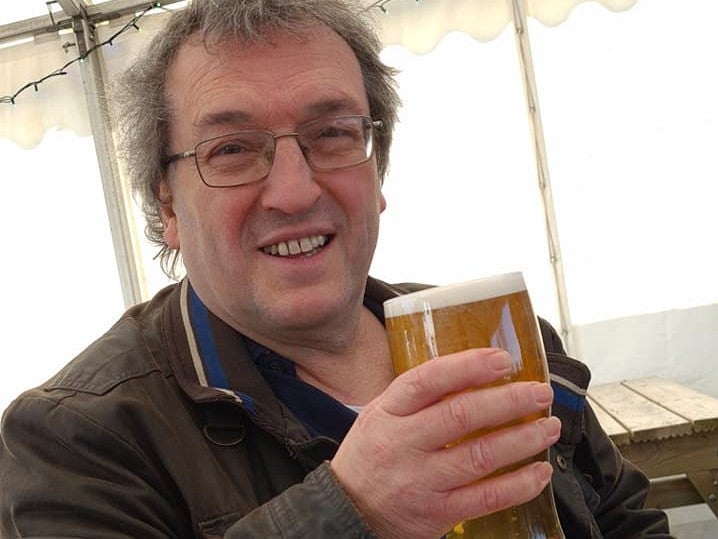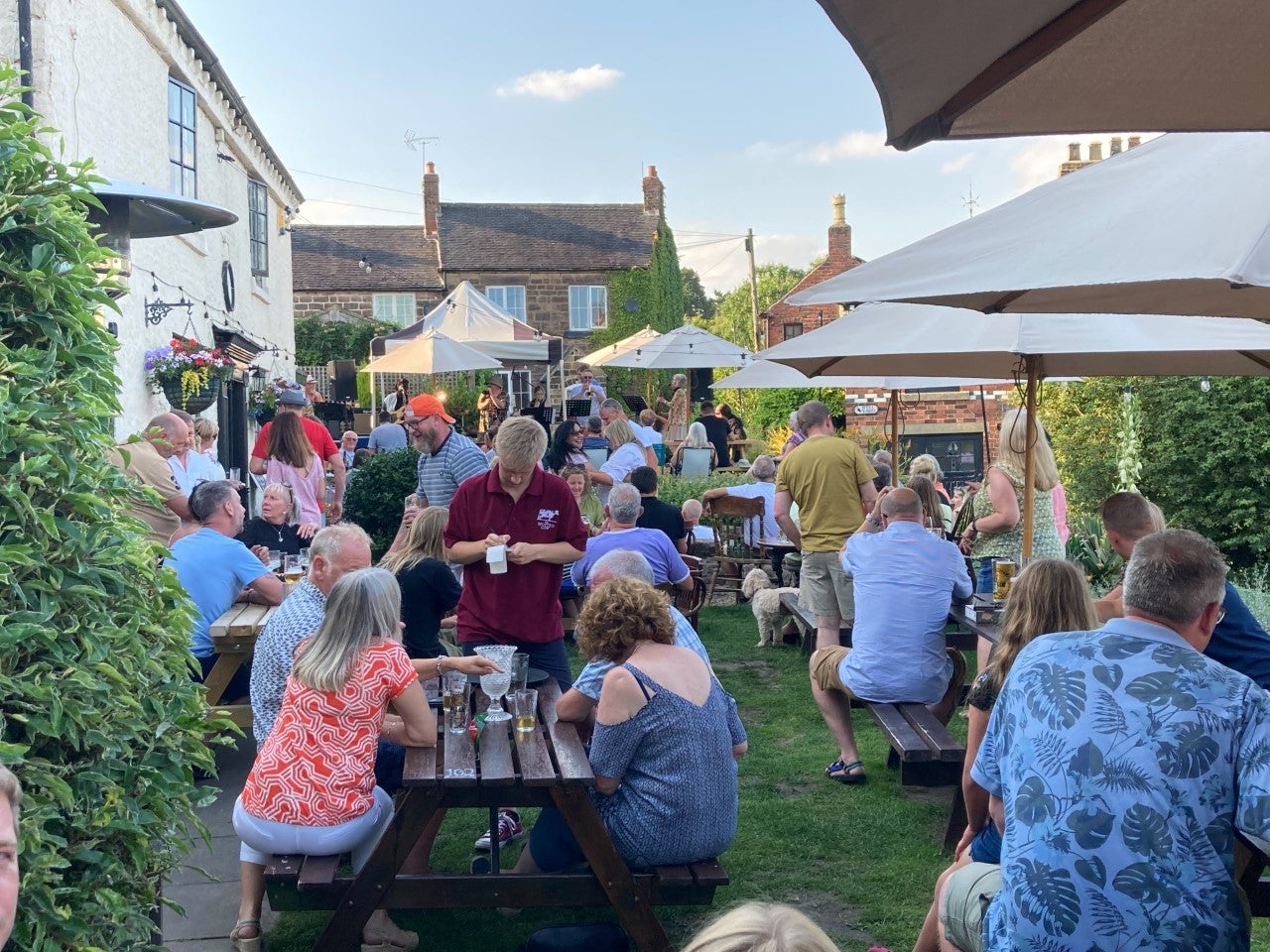Cheers to that: inside the rise of Britain’s community-run pubs
Ten years ago, there were just 14 boozers owned by local cooperatives. Now there are 150 – and almost double that in the pipeline. How did they succeed where the big chains failed? Colin Drury sidles up to the bar to investigate


There is plenty that makes The Dog Inn pub in the tiny hilltop village of Belthorn, Lancashire, stand out: the theatre nights, the book-swap library and the fact it also doubles up as the local shop (meat, dairy and essentials all available).
But perhaps the most unique thing about this 18th-century boozer is what takes place here every third Sunday of the month: a church service.
“They set up some chairs as pews and have a table as an altar,” says Dave Hollings, chair of the pub’s management committee. “The church closed here 40 years ago so I suppose it was a way to bring a presence back into the village.”
Do the congregation have a pint afterwards? “I’m sure some do,” replies Dave. “Although it’s more tea and biscuits, I think.”
Welcome to the wonderful world of Britain’s community-run pubs.
While hundreds of rural hostelries have shut down over the last decade, these establishments – generally owned by local “shareholders” – are gloriously bucking the trend.
In 2010, there were just 14 of them. Today, thanks to the mix of legislation, grant schemes, and rural residents determined not to lose their alehouses, more than 150 pubs once earmarked for closure are now owned by their local community.
Even that number is set to be dwarfed after applications to take over struggling establishments doubled during the last year. It means some 250 struggling boozers are currently subject to such a potential transfer of ownership.
“It is absolutely a success story,” says James Alcock, chief executive of the Plunkett Foundation, an Oxfordshire-based charity supporting such ventures. “We’ve had decades where the narrative has been that these businesses are not sustainable but it’s clear, once they are redirected towards the needs of local people – rather than the need to make profit – they become the real heart of their area once more.”
Whereas pub retailers have blamed cheap supermarket alcohol for their decline, this new breed of boozer has pivoted towards offering a far broader range of experiences. There’s good food and beer (both generally local), as well as staples such as live music and quizzes. But there’s also yoga sessions, soup kitchens, Scout nights, choir groups, art exhibitions and WI nights.
At the Anglers Rest, in the Peak District village of Bamford, they run the local Post Office in the same building. The Old Crown, in Hesket Newmarket, Cumbria, has its own microbrewery. And at The Fox at Loxley, in Warwickshire, they don’t just have a beer garden; they tend an entire wild meadow out the back.
“The innovation is astonishing,” says Katie Wiles, communications manager at the Campaign for Real Ale. “They are shining examples of what pubs should be.”
Yet, crucially, this trend may be about something more than just boozers. It is, some have suggested, part of a wider fightback against the decline of rural Britain’s amenities. If local cooperative groups can turn pubs into viable hubs, why not other aspects of village life? Why not the library, the shop, a nursery or youth centre?
“The one thing we’re consistently told by communities is that transforming the pub has made the entire local area more vibrant,” says Alcock. “It creates jobs, boosts social interaction and attracts visitors. It’s hard work but, I think, there is a growing sense that maybe this kind of cooperative model could work more widely.”
The specifics of each buy-out are different but, as a general rule, hundreds of local residents will put hundreds of pounds each into a collective pot, which is then used to buy, refurbish and reopen the pub in question. In return, those investors become “shareholders”, and all have a vote on how the place is run. As Alcock says, they are local cooperatives in the “truest sense of the word”.

The reason for their growth over the last decade probably comes down to two main factors. Firstly, the coalition government’s 2011 Localism Act, and secondly, the “More Than A Pub” scheme launched by the Plunkett Foundation in 2016.
The former enabled residents to have certain buildings listed as “assets of community value”, making it easier for cooperative groups to buy them. The latter provided grants, loans and business and legal expertise to groups wanting to save their watering holes. In total, it has pumped £4.6m into supporting these local buyouts.
“We were seeing so many community groups that had really strong business plans and were raising huge amounts of money but weren’t quite getting over the line,” says Alcock. “As a charity, we felt that if they had some initial help, they could really turn these places into sustainable business that would have a transformative effect on the local area. So, we felt empowering that change was really worthwhile.”
Of the 150 such pubs opened since Tafarn y Fic, in Llithfaen, Gwynedd, became the first to be owned by the local community in 1988, only one has ever failed. Indeed, by becoming action hubs during the coronavirus pandemic - and without the need to make a profit - many have thrived even over the last two years.

This is certainly the case for The Spotted Cow in the Derbyshire village of Holbrook.
It’s Thursday lunchtime when The Independent visits but it feels Friday evening busy. There’s a handful of locals propping up the bar, a couple of dog-walkers enjoying refreshments and several tables worth of diners in various nooks.
None of this, says Christian Limb, was imaginable five years ago when a planning application was submitted to turn the entire site into 10 houses.
Astonished that they could lose a pub that had stood for 150 years, villagers set to work raising money to buy it. “So many people round here had such affection for the place – they’d either had a first drink here or worked here or celebrated some big moment – that asking them to help save it was pushing at an open door,” says Limb, a 47-year-old IT manager who helped lead the campaign.
Some 250 villagers bought shares worth £175,000, with another £225,000 raised in grants and loans. They got the keys on Good Friday in 2017. Three months later, after a complete refurbishment – which saw hundreds of villagers volunteering for free – the place reopened.
“It was heaving,” says Limb. “Standing room only. I think everyone in the village was here at one point or another.”
Since then, the cooperative has gone from strength to strength, hosting food festivals, Christmas markets and sports events. They’ve added a cafe and post office counter in an adjacent building. Some 36 staff work here.
“I think, because it’s owned by so many people in the village, there’s a lot of goodwill towards it,” says Linda Bower, the management committee’s 70-year-old treasurer. “People come here in a way they might not if it was just an anonymous chain.”
“You come out for a couple of pints,” says Limb. “And you feel like you’re doing something good for the village.”
Join our commenting forum
Join thought-provoking conversations, follow other Independent readers and see their replies
Comments
Bookmark popover
Removed from bookmarks